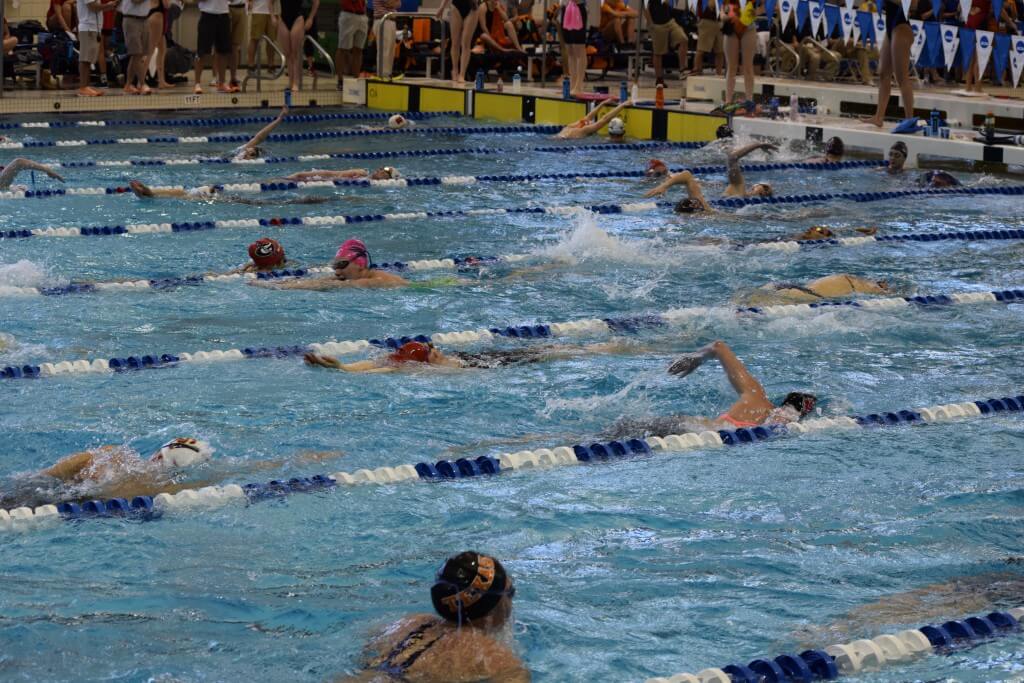The Warmdown: Why Coaches Make Sure Athletes Put In Recovery Laps

The Warmdown: Why Coaches Make Sure Athletes Put In Recovery Laps
By Vanessa Steigauf, Swimming World College Intern
Whether you call it recovery, warmdown, cool-down, or an easy swim, active recovery is something coaches want you to do after basically every kind of exercise. Even if we sometimes prefer a hot shower over long and slow swimming, we remind ourselves of the soreness we will experience tomorrow if we don’t do the extra yards today. But why do our muscles seem to recover faster after even more swimming? Wouldn’t it be more relaxing to sit in a hot tub and call it a day?
Where Does the Energy for Fast Swimming Come From?
If so many of us value a warmdown after a tough exercise, there must be something advantageous about it. Whether you are a sprinter or a distance swimmer, during practice and racing, everyone has to get the energy for fast swimming from somewhere. And most of us know it is the many servings of food we crammed into our hungry stomachs before practice that give us this energy. Basically, it is the glucose within the food that helps to provide energy to our cells, including our muscle cells.
When we jump into the pool and activate our muscles, there are several ways they can get energy. During long and rather slow swimming, we are using the aerobic pathway. Our mitochondria (all together: “the powerhouse of the cell!”) use oxygen to generate the energy for our muscle movements. Because this is the most efficient way to get energy, we could go on like this for hours.
But during practice, we want to swim faster than that! When we do a sprint, the first seconds are usually pretty easy. Besides breathing deeper, we aren’t really exhausted. This is because our muscles can get energy from “direct phosphorylation” for a short amount of time. That means we don’t need any oxygen and just use the energy that is stored in our muscles anyways.
However, we eventually use up this energy storage and our muscles have to get energy elsewhere. We can still sprint very fast for about 30 to 40 seconds without using oxygen. Our muscles mainly get energy from glucose within our blood. But because we don’t use oxygen to get the energy, a byproduct is produced, called lactic acid. This is the annoying little thing causing the muscle burning we feel as soon as we touch the wall. And with the lactic acid accumulating in our blood and muscles, the importance of recovery and warmdown come into play.
Passive vs. Active Recovery
At the end of intense exercise, we typically produce a lot of the lactic acid. For now, it just sits in our muscles, making them burn, and putting a tormented look on our face. But in the long run, it has a way bigger influence than that. Everyone who had to swim two races at a meet without enough time to recover in between, knows exactly what happens when the lactic acid just stays in your muscles. They burn even more, preventing you from meeting your potential in the next swim. We now understand: recovery is important after an intense swim. But why should it be active recovery?
During passive recovery, when we just sit on the pool deck and wait for our muscles to be fit again, the blood that pumps through our muscles slowly removes the lactic acid. After a race, this process takes 60 minutes or more, and after an intense practice, it can take up to 48 hours. We will recover eventually but obviously not in time for the next race or practice coming up. With active recovery through a warmdown, the mechanism for removing lactic acid is the same. But the big difference is that active recovery can work twice as fast as passive recovery. Because the blood rushes through your muscles faster, it carries more waste products away and more nutrients to the tissue needing it to recover properly. At a meet, you might be ready to race again after only about 30 minutes and after practice you totally recover after only one day.
The Role of Recovery In A Busy Practice Schedule
Recovery definitely makes sense for races at a meet. But how in the world should we fully recover from practice when there are many days with double practice during the week. The secret of practicing is that you don’t always want to fully recover after one practice before you get into the next one. Fatigue from several practices is what generates the overall improvement in your performances in the long run. A little soreness and fatigue are welcome during a normal week of practice. But that also doesn’t mean you shouldn’t warm down at all to increase your practice load and improve even further. Make sure to not miss the golden mean of exhaustion and recovery!
Other important factors of recovery that swimmers and coaches sometimes underestimate are nutrition and hydration. Refilling glucose levels after exercise and providing enough water and electrolytes is crucial to obtaining perfect conditions for your body to recover from hard work. Additionally, there are other ways to help your muscles recover when you do don’t have access to a warmdown pool.
Now that you have the background for why active recovery reduces the soreness of your muscles after racing and hard practices, hopefully next time you think twice before skipping the warmdown pool. And trust me, a hot shower feels even more rewarding when you know you did a good warmdown and won’t have to worry about being sore the next day.
All commentaries are the opinion of the author and do not necessarily reflect the views of Swimming World Magazine nor its staff.



